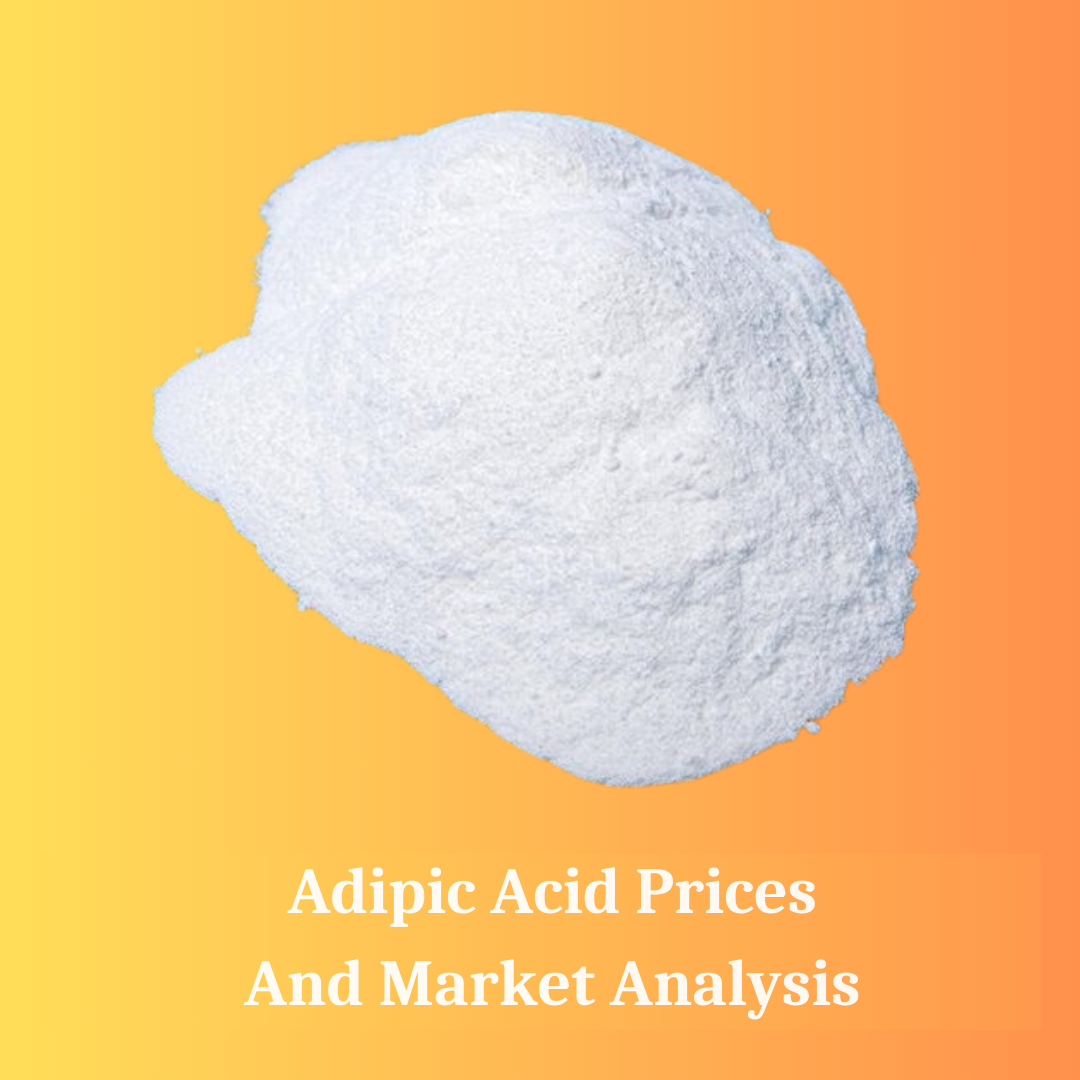Adipic acid is a critical chemical in the production of various materials, including nylon, plastics, and even food products. It is especially important in industries like automotive, textiles, and packaging, where its applications are integral to product development. As we move into 2025, many industry players and stakeholders are watching closely for how the market will evolve, especially with regard to pricing, industry growth, and market dynamics. Understanding the trends and factors influencing the adipic acid market is vital for both manufacturers and consumers.
👉👉👉 Get Real-time Adipic Acid Prices, trends, forecast and market analysis: https://tinyurl.com/2wmppd7w
Market Overview: What Is Driving the Adipic Acid Market?
Adipic acid, a dicarboxylic acid mainly used in the production of nylon, is essential for various sectors that rely on synthetic materials. It is primarily produced through the oxidation of cyclohexane, a process that involves the use of benzene. As the demand for products such as synthetic fibers, resins, and plastics rises, adipic acid plays a crucial role in meeting these needs. This demand, along with other market dynamics, shapes the price trends and forecasts for adipic acid in the coming years.
Adipic acid Market Trends and Growth Drivers
Several key trends are expected to influence the adipic acid market by 2025. Firstly, sustainability has become a significant focus in the chemical industry, leading to a shift toward greener alternatives. For example, bio-based adipic acid, which is derived from renewable plant resources instead of fossil fuels, is gaining traction. This trend toward sustainability, driven by stricter environmental regulations and consumer demand for eco-friendly products, is likely to influence the market dynamics and production costs of adipic acid.
Another growth driver is the rise in demand from the automotive industry. With the increasing use of lightweight materials to improve fuel efficiency and reduce emissions, there has been a surge in the need for nylon 6,6 and other materials derived from adipic acid. Additionally, the growing focus on electric vehicles (EVs) and their lightweight components further boosts demand for these materials, driving the need for adipic acid.
The textile industry is also a significant consumer of adipic acid, as it is used to produce synthetic fibers such as nylon. As the global population continues to grow, the demand for textiles, including clothing and home furnishings, is expected to rise. This will, in turn, stimulate the demand for adipic acid and further increase the size of the market.
Adipic acid Market Size and Share: A Growing Industry
The global adipic acid market has been expanding steadily over the past few years. According to various reports, the market size in 2023 was valued at over $7 billion and is expected to grow at a compound annual growth rate (CAGR) of around 5% from 2024 to 2029. By 2025, the market is expected to reach a size of approximately $8-9 billion, driven by continued demand in key industries such as automotive, textiles, and consumer goods.
The largest share of the adipic acid market is held by North America, Europe, and Asia-Pacific. Among these regions, Asia-Pacific is the dominant market, primarily due to China’s large manufacturing base and growing industrial demand. China is also focusing on environmental regulations, pushing for cleaner and more sustainable production practices, which could influence adipic acid pricing in the region.
Market Forecast for 2025: Price Trends and Projections
In terms of pricing, adipic acid prices have fluctuated over the years due to a variety of factors. The price is heavily dependent on the cost of raw materials like benzene and cyclohexane, as well as energy costs, which can make up a large portion of production expenses.
In 2025, it is likely that prices will experience moderate increases due to growing demand in industries such as automotive and textiles. However, the ongoing development of bio-based alternatives may help stabilize prices in the long term, preventing significant spikes.
Analysts forecast that by 2025, prices will likely range between $1,500 to $2,000 per ton, depending on regional demand, the volatility of raw materials, and the growth of sustainable production methods. While bio-based adipic acid may not replace traditional production methods entirely, it is expected to capture a larger market share, influencing price trends.
Market Outlook: Opportunities and Challenges
The adipic acid market’s outlook for 2025 remains positive, but challenges are expected. Rising energy costs and volatile raw material prices remain significant hurdles for producers. Moreover, geopolitical instability, such as the trade tensions between major chemical-producing countries, could disrupt the supply chain and affect pricing.
Despite these challenges, opportunities exist for companies investing in sustainable production techniques. The shift toward greener alternatives and renewable resources is expected to not only help mitigate production costs but also align with the increasing demand for eco-friendly products in the marketplace. With consumer preferences shifting toward sustainability, producers who embrace bio-based adipic acid and lower-carbon production processes will be well-positioned for success.
Top Suppliers and Key Players in the Market
Several leading companies dominate the adipic acid market. These include industry giants such as BASF, Ascend Performance Materials, Invista, and DSM, which are key players in the production and supply of adipic acid worldwide. These companies are heavily involved in the research and development of more sustainable manufacturing processes, which could shape the market’s future.
BASF, for example, has been a pioneer in developing bio-based adipic acid, partnering with other industry leaders to scale up production. Ascend Performance Materials is another major player, known for its extensive portfolio of high-performance materials derived from adipic acid. Invista, which owns the brand name “Nylon 6,6,” also continues to dominate the market, leveraging its robust manufacturing capabilities to meet growing demand.
In addition to these large multinational players, smaller companies and startups focused on developing innovative bio-based solutions are gaining traction. These companies are likely to play an increasingly important role in reshaping the market in the years leading up to 2025.
The Future of the Adipic Acid Market
Looking ahead, the adipic acid market in 2025 presents a landscape full of growth opportunities, as well as challenges. As industries such as automotive and textiles continue to rely on adipic acid, demand will remain robust, driving the market size and price trends upward. However, factors like raw material prices, energy costs, and the development of bio-based alternatives will influence the price dynamics, potentially mitigating cost increases in the long run.
For industries relying on adipic acid, staying ahead of market trends and embracing sustainable production methods will be key to success. The market’s outlook remains positive, with growth expected, though how prices evolve will depend on the pace of technological innovation and geopolitical stability. In this dynamic environment, stakeholders must be ready to adapt to new production methods, industry shifts, and pricing strategies.
Also Read: Why N-Heptane Prices Will Be a Hot Topic in 2025 – What You Need to Know

